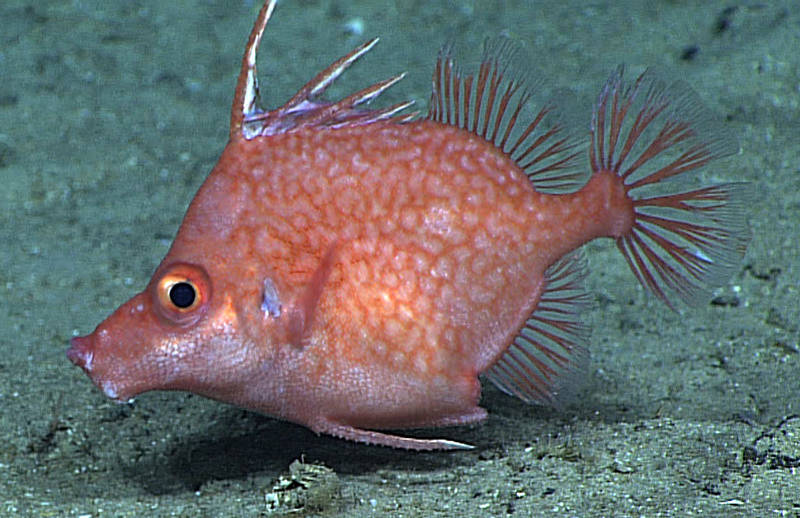

The Hawaiian spikefish, Hollardia goslinei, was first discovered as a specimen that floated to the surface because of lava from the 1950 eruption of Mauna Loa that flowed into the ocean on the Kona Coast of Hawaiʼi Island. Scientists on Hawaii Undersea Research Laboratory submersible dives often saw spikefish at 902–1690 feet (275–515 meters) throughout the Hawaiian Islands and at Johnston Atoll. This spikefish, or a very similar species, was also commonly seen in dives in the Line Islands south of Hawaii.